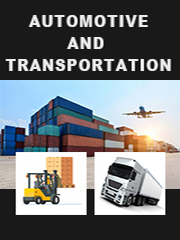TOP CATEGORY: Chemicals & Materials | Life Sciences | Banking & Finance | ICT Media

Download Report PDF Instantly
Report overview
The global Automotive Metal Forming market was valued at US$ 240060 million in 2022 and is projected to reach US$ 279580 million by 2029, at a CAGR of 2.2% during the forecast period. The influence of COVID-19 and the Russia-Ukraine War were considered while estimating market sizes.
Metal forming is the metalworking process of fashioning metal parts and objects through mechanical deformation; the workpiece is reshaped without adding or removing material, and its mass remains unchanged. Forming operates on the materials science principle of plastic deformation, where the physical shape of a material is permanently deformed.
This report aims to provide a comprehensive presentation of the global market for Automotive Metal Forming, with both quantitative and qualitative analysis, to help readers develop business/growth strategies, assess the market competitive situation, analyze their position in the current marketplace, and make informed business decisions regarding Automotive Metal Forming. This report contains market size and forecasts of Automotive Metal Forming in global, including the following market information:
Aluminum is expected to show the fastest growth over the forecast period, by material type. It is rapidly replacing steel in many automotive applications like body in white and chassis. The usage rate (%) of aluminum for forming applications is higher in Europe and North America when compared with that in Asia Oceania. The consumer spending power and vehicle costs are higher in countries such as the US and Germany, as compared to the developing economies. Thus, automakers are increasing the use of expensive lightweight materials such as aluminum, which helps to reduce the overall vehicle weight, thus improving the performance and fuel efficiency. However, it is 35-40% costlier than steel, because of which it has a low penetration in Asia Oceania.
We surveyed the Automotive Metal Forming manufacturers, suppliers, distributors and industry experts on this industry, involving the sales, revenue, demand, price change, product type, recent development and plan, industry trends, drivers, challenges, obstacles, and potential risks.
Total Market by Segment:
Global Automotive Metal Forming Market, by Type, 2018-2023, 2024-2029 ($ Millions) & (K MT)
Global Automotive Metal Forming Market Segment Percentages, by Type, 2022 (%)
Global Automotive Metal Forming Market, by Application, 2018-2023, 2024-2029 ($ Millions) & (K MT)
Global Automotive Metal Forming Market Segment Percentages, by Application, 2022 (%)
Global Automotive Metal Forming Market, By Region and Country, 2018-2023, 2024-2029 ($ Millions) & (K MT)
Global Automotive Metal Forming Market Segment Percentages, By Region and Country, 2022 (%)
Competitor Analysis
The report also provides analysis of leading market participants including:
Key companies Automotive Metal Forming revenues in global market, 2018-2023 (Estimated), ($ millions)
Key companies Automotive Metal Forming revenues share in global market, 2022 (%)
Key companies Automotive Metal Forming sales in global market, 2018-2023 (Estimated), (K MT)
Key companies Automotive Metal Forming sales share in global market, 2022 (%)
Further, the report presents profiles of competitors in the market, key players include:
Outline of Major Chapters: